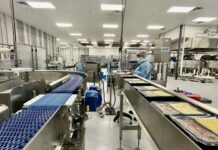Pesticides are one of the methods used to control or kill pests. However, we have to remember that its use in excess or in an inappropriate manner can result in environmental hazards.
(Isstories Editorial):- Beirut, Lebanon May 8, 2023 (Issuewire.com) – Kassar Group SARL – Pesticide applications require training and skills to effectively target pests. Pesticides are chemical or biological agents designed specifically to kill pests. When used properly, pesticides help protect plants and homes from damage. However, when not used in the right amount or label instructions are not followed, it can lead to soil, air, or water pollution. So in this blog, we will talk about best practices for pesticide application by leading pesticides company.
More on Isstories:
- SimpliDistance – Rise of the Specialist: Why Online MBAs with Focused Specializations are in Demand
- HireDynamicsDevelopers.com Announces the Entrance into the LATAM Market of Microsoft Dynamics Consultants
- Enhance Your Model Y Driving Experience with AceTesla.com’s Customized Accessories
- Corridor Coffee Club Launches Innovative Digital Coffee Passport Program
- Prominent Allergist-Immunologist James A. Thompson, MD, FACAAI, Revolutionizing Allergy Care in Greater Chicago
What is a pesticide?
A pesticide is a natural, organic, or synthetic material that controls, prevents, or kills pests. It is a broad term that covers insecticides, herbicides, fungicides, rodenticides, and other materials that are used for mite control. In short, pesticides company produces pesticides that are often treated as plant protection products that eliminate a variety of agricultural pests that can harm plants.
What are the best practices for pesticide application?
Understanding when to apply pesticides
Before using a pesticide, it is important to ensure you actually need it. First of all, determine whether the organism for which you are using pesticide is actually causing damage. If there are other ways through which it can be controlled, then research the method thoroughly and try to use it instead of using pesticides.
Here are some of the questions that you need to ask before opting for the option of using pesticides.
- Is pest the actual problem, or is it something else?
- What type of pesticide is it, and which pesticide would remain ideal?
- How many pests are there, and is pesticide the only way to control them?
Know your crop
One size fits all was the previous motto for pesticides, and with advanced technology and time, pesticides by cheap pesticides manufacturer are more targeted. So before applying pesticides, you need to know your crops. Is your crop organic or conventional? For organic crops, pesticides should be chosen carefully, whereas, for conventional crops, a more comprehensive range of options is available.
If you have a fruit-bearing crop, you should be aware of the number of days to ensure the pesticide has been disseminated before it is used. Factors like crop density and height need to be kept in mind to understand whether you need a sprayer or something taller for pesticides.
Operation indoors or outdoors is also important to note, as they both have different sprayers. Additionally, be sure of the area restrictions. Operations that have public spaces nearby are restricted in when and how much they can spray. The weather and temperature also play a major role in the application of spray.
Understand the type of pest
Having a thorough understanding of the targeted pest is important to deal with it effectively. Understand whether you are trying to deal with a particular pest or multiple ones at the same time. Consider the life cycles of targeted pests to efficiently use the pesticide.
Consider the following factors:
- How does the targeted pest travel?
Flying pests can be classified into two types, which are strong and weak flyers. If the pest is a strong flyer, it will quickly escape the pesticide and move to a crop where the pesticide was not sprayed. Hence, specific pesticide equipment will be required to minimize the air displacement that restricts the movement of the fast flyer.
Whereas weak flyers will require conventional spraying methods, ensure where they need to be sprayed to avoid spraying them in the entire field, thereby cutting costs. Additionally, if your pest moves on the ground and hides within the soil, spraying does not help.
- How does the targeted pest eat?
The feeding habits of pest hint at the best way to attack. For instance, caterpillars eat whole leaves, while aphids eat stems. Pesticides that work their way through the soil will effectively target aphids but not caterpillars.
Preparing your equipment the right way
Preparing your equipment the correct way can make a huge difference in its effectiveness. According to top pesticides manufacturer, it can help you save money and reduce the need to reapply pesticides frequently.
Look for the following measures to prepare your equipment:
Check the nozzle. Ensure the holes of the nozzle are the right size. Bigger holes can affect the spray pattern.
- Check the pump pressure; appropriate pump pressure affects the spray pattern.
- Check for hard water buildup; hard water results in blockage of the spray nozzle, which disrupts spray effectiveness.
- Check the height of the sprayer. Height makes a huge difference in deciding whether the pesticide will reach the pest or not.
Read the product label instructions carefully.
It is crucial to go through the product instructions carefully before using the actual product. The import pesticides label will provide you with specific instructions on how to use the nozzle for wide coverage, etc. Reading the instructions carefully aids in the legal and safe use of the product. If not followed properly, it can result in waste of the product, inappropriate application, and harm to the environment.
Conclusion
Pesticides are one of the methods used to control or kill pests. However, we have to remember that its use in excess or in an inappropriate manner can result in environmental hazards. By following the best pesticide application measures, you ensure minimum risk and maximum results.


This article was originally published by IssueWire. Read the original article here.
































